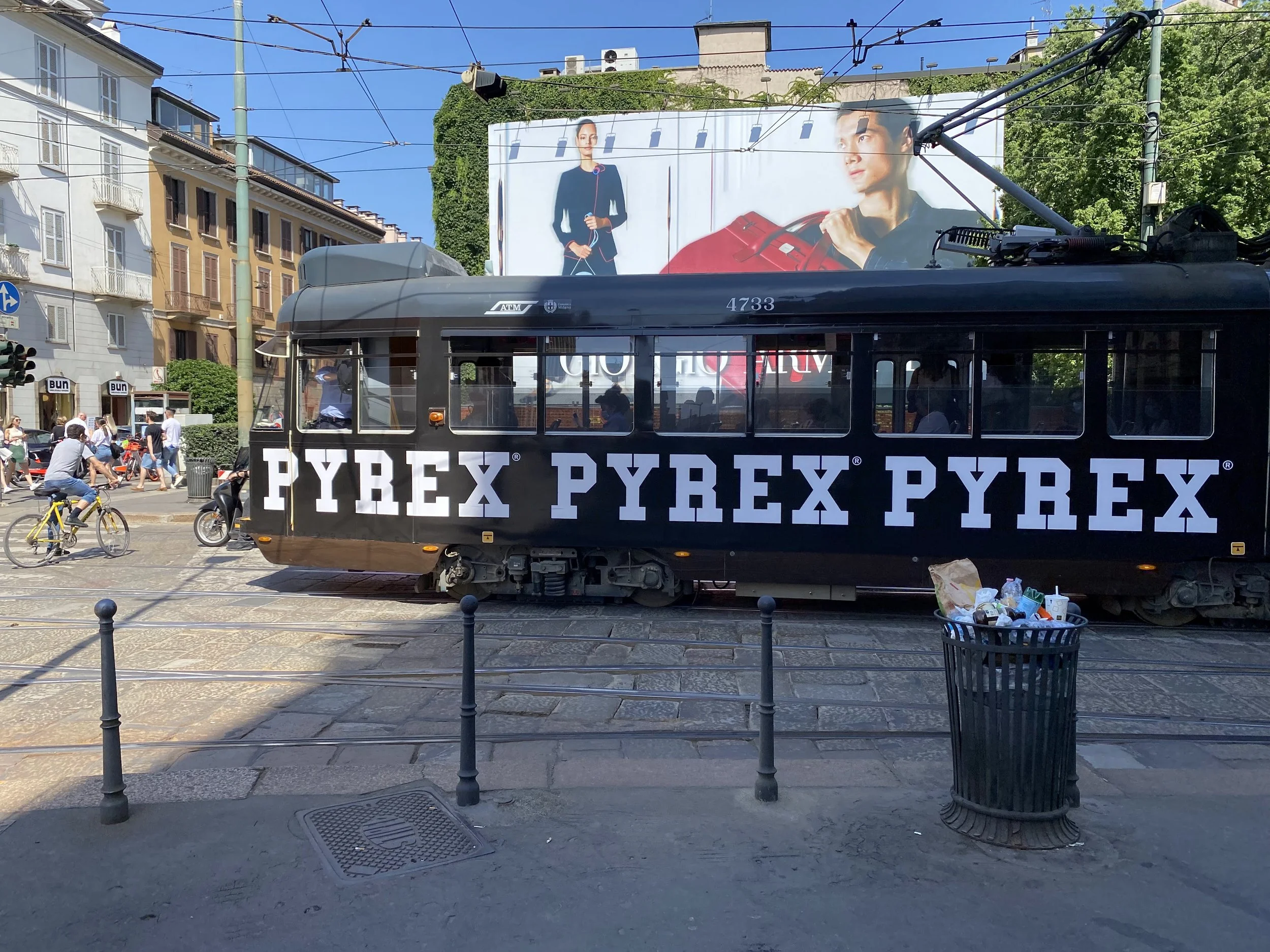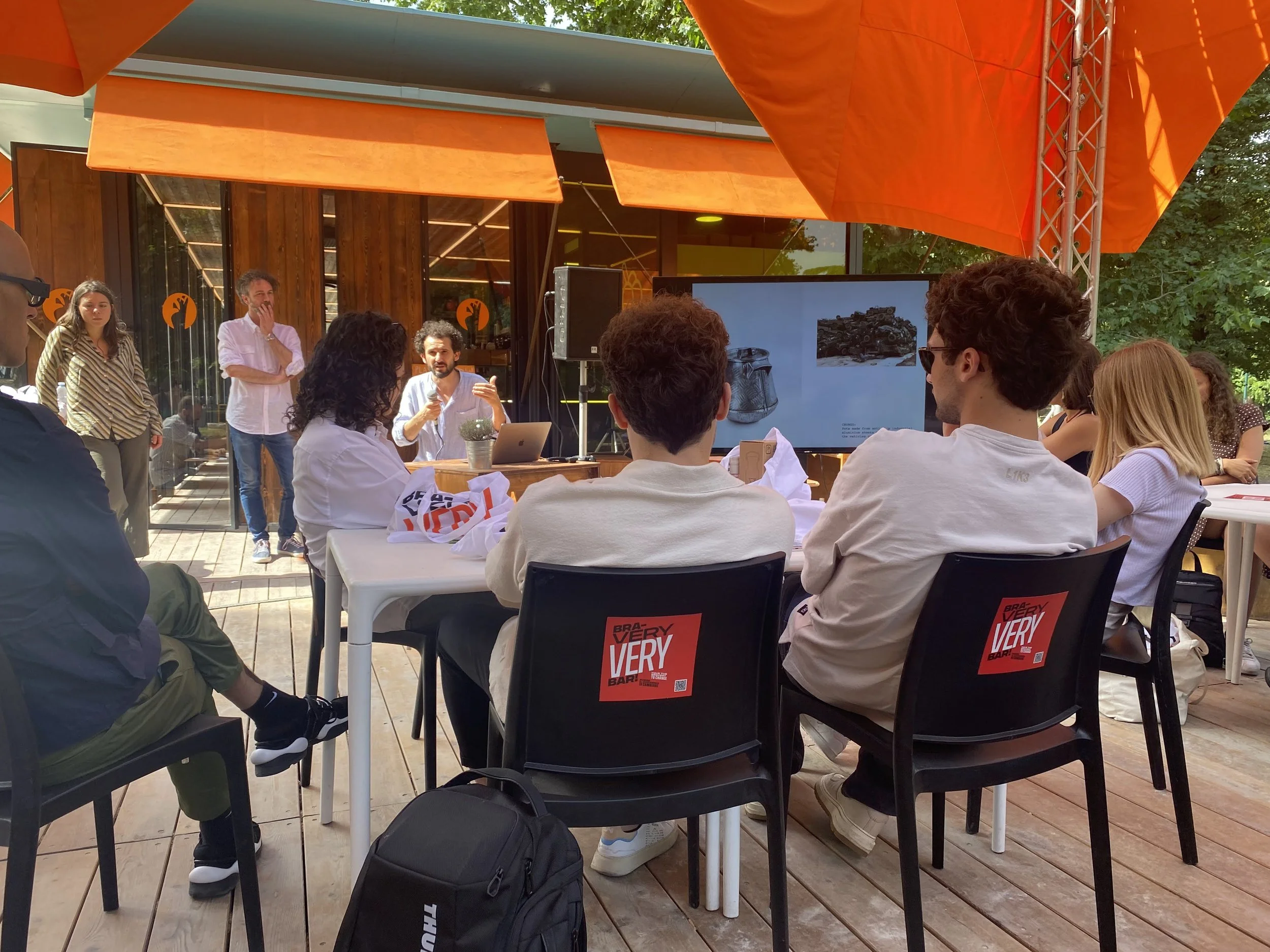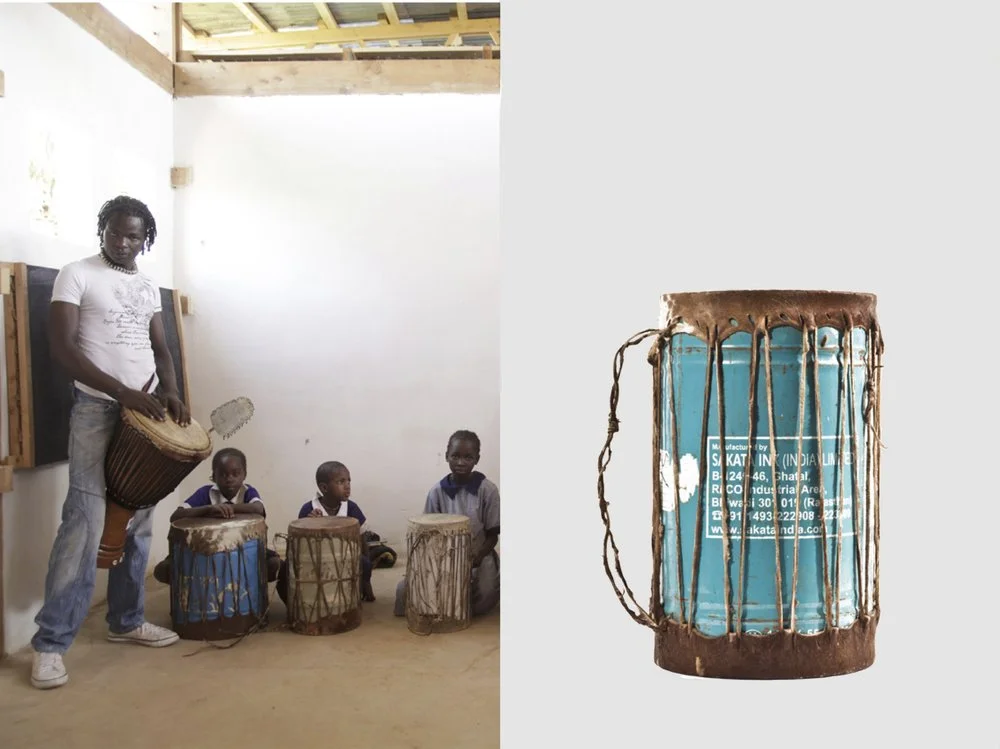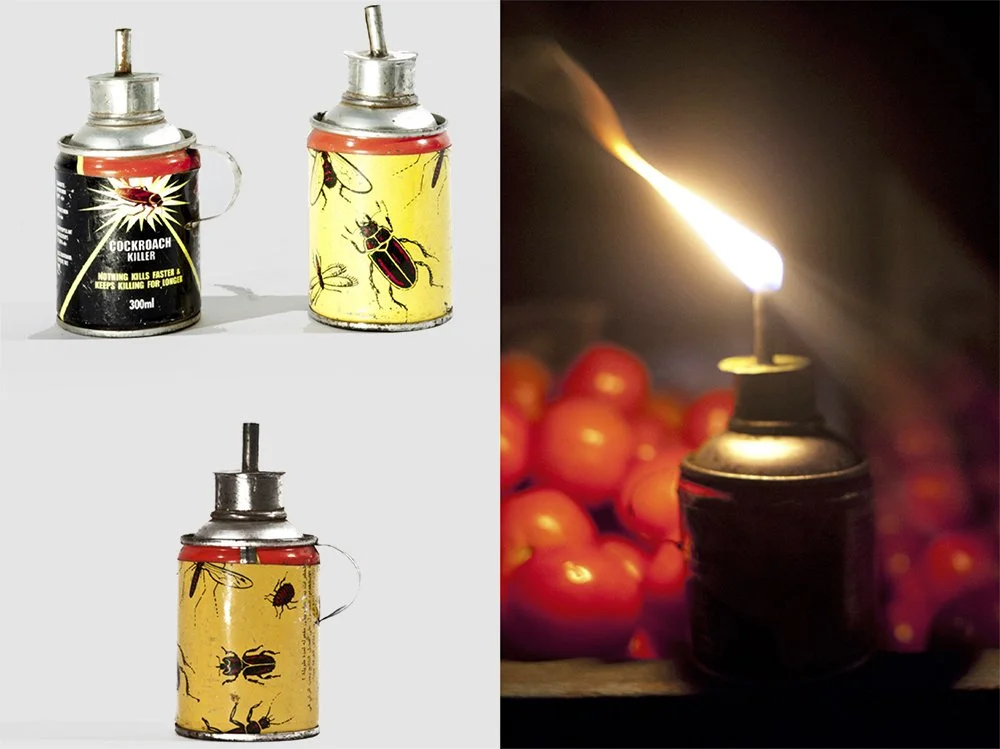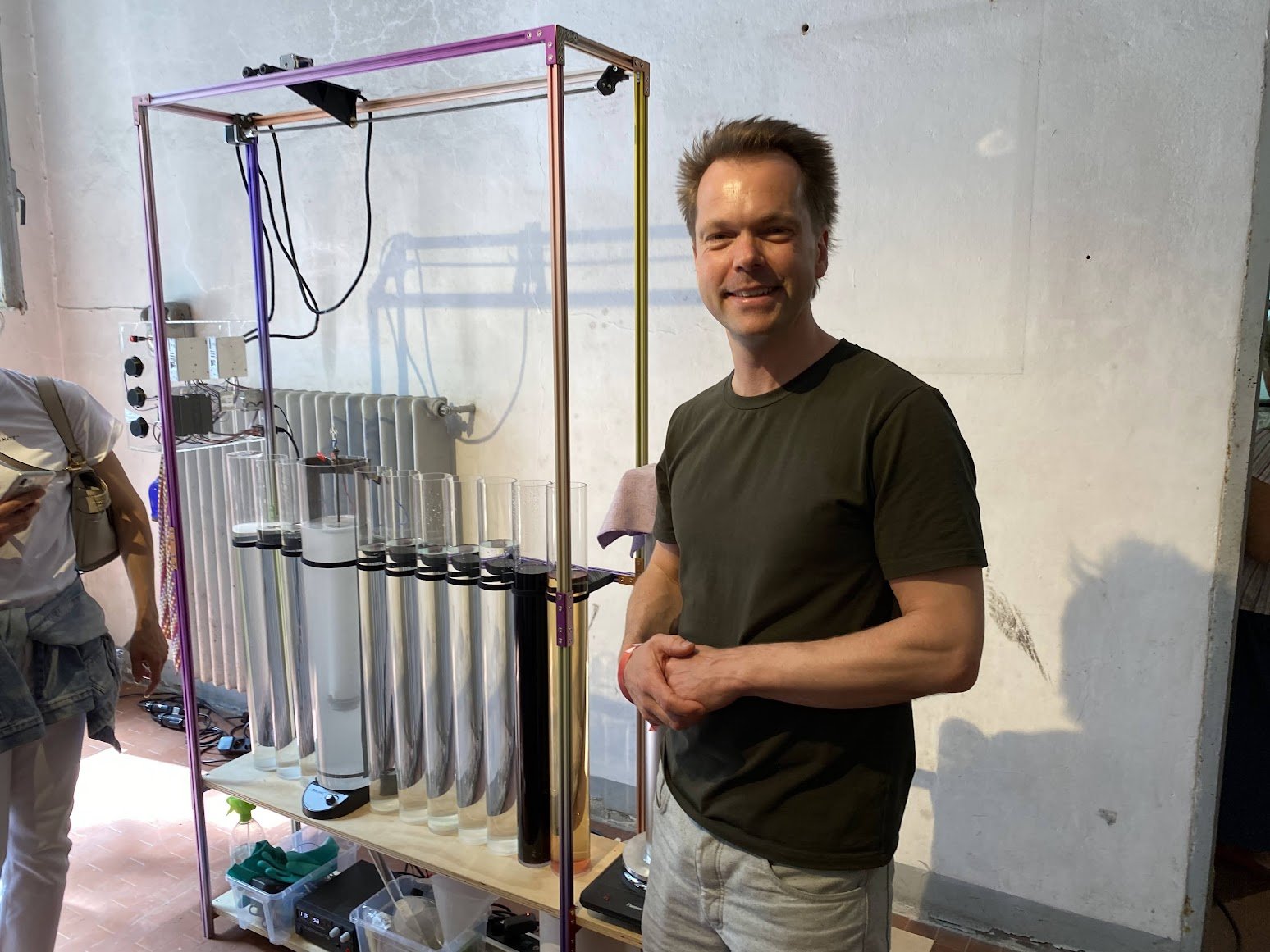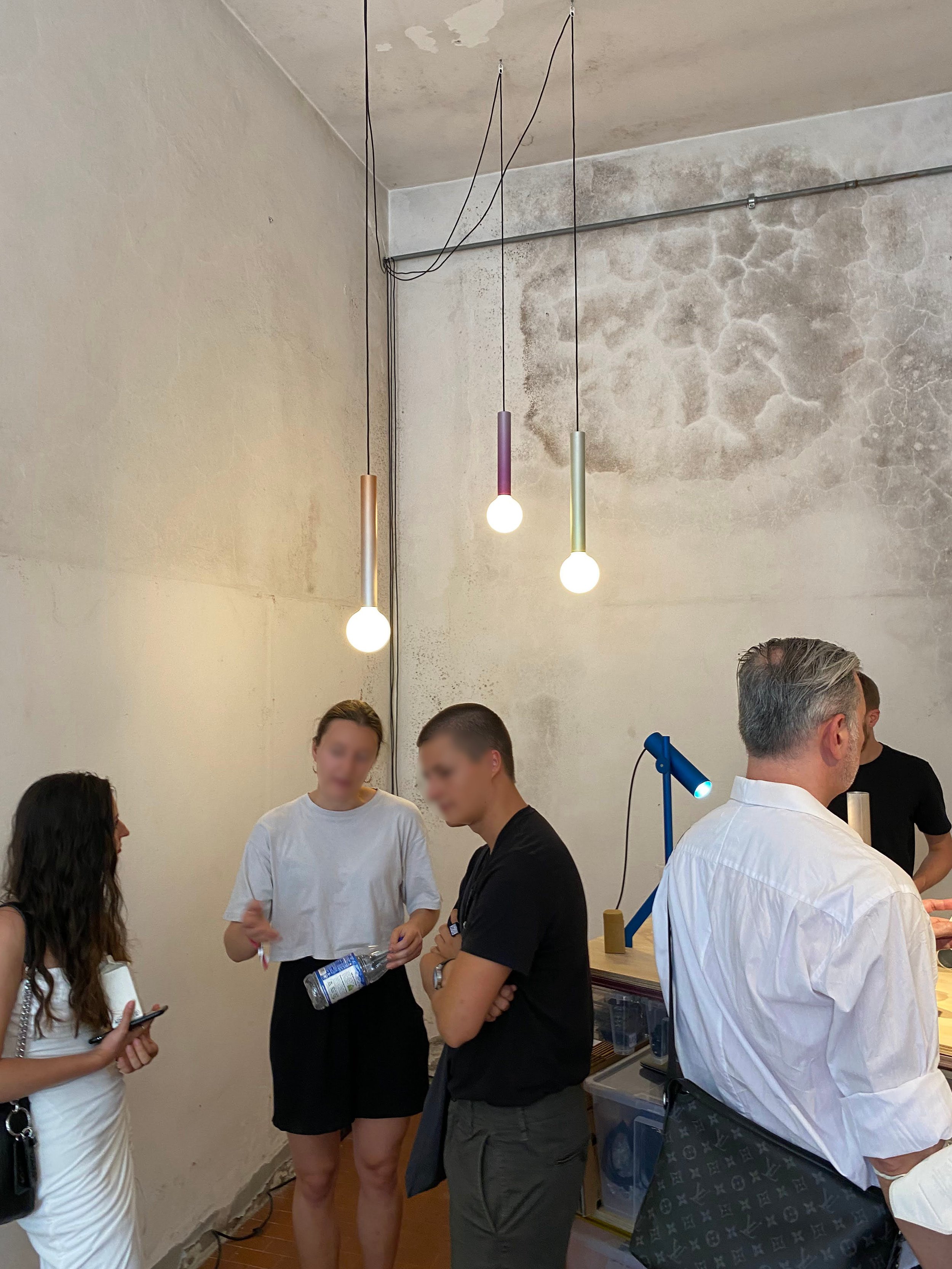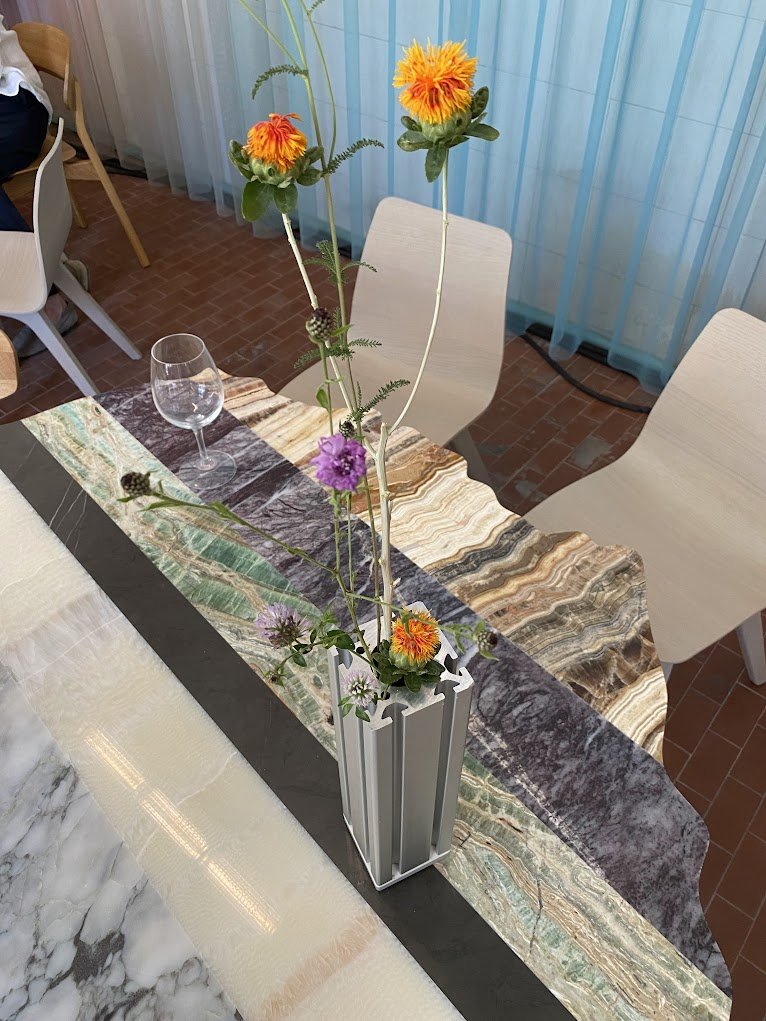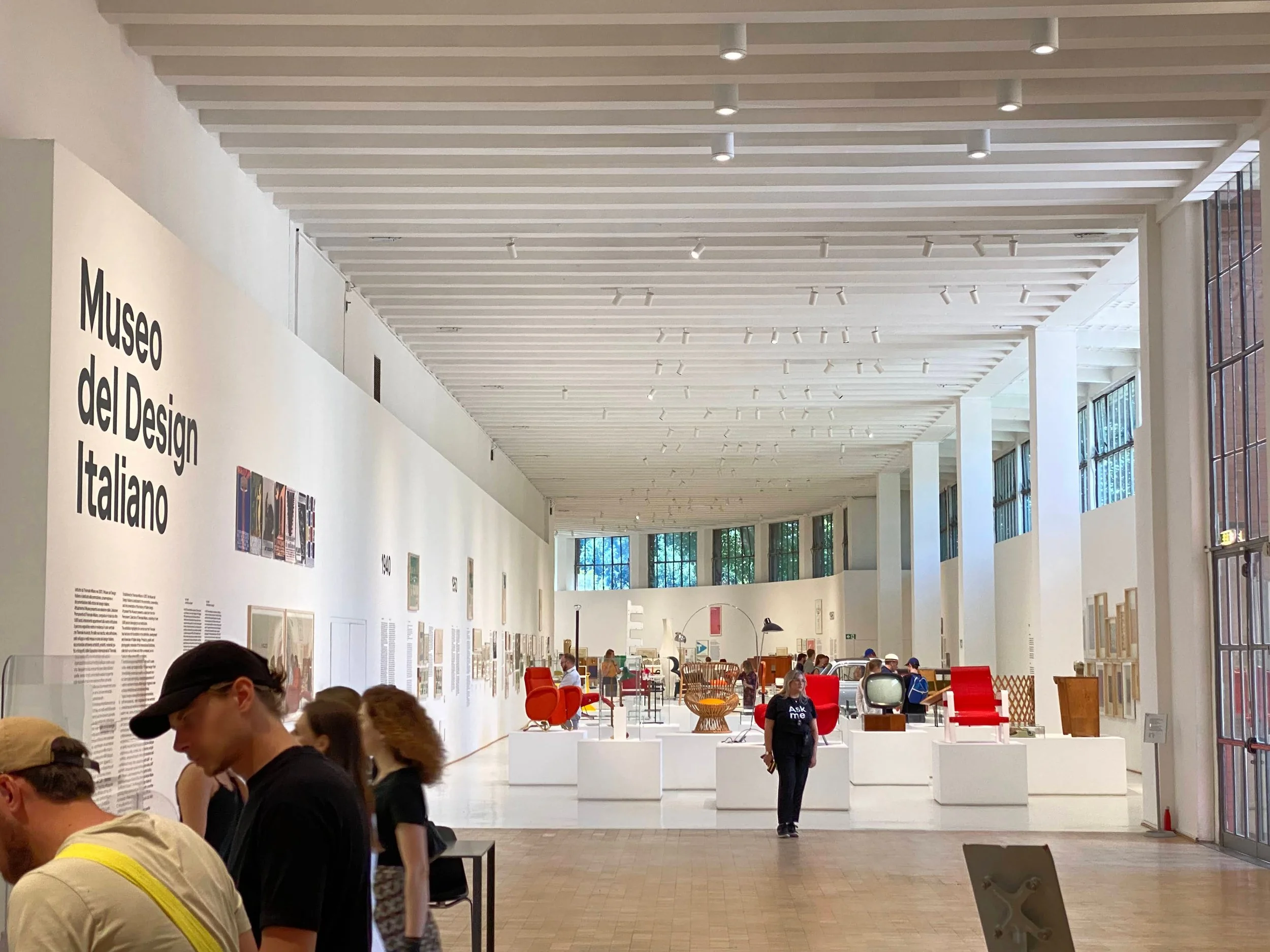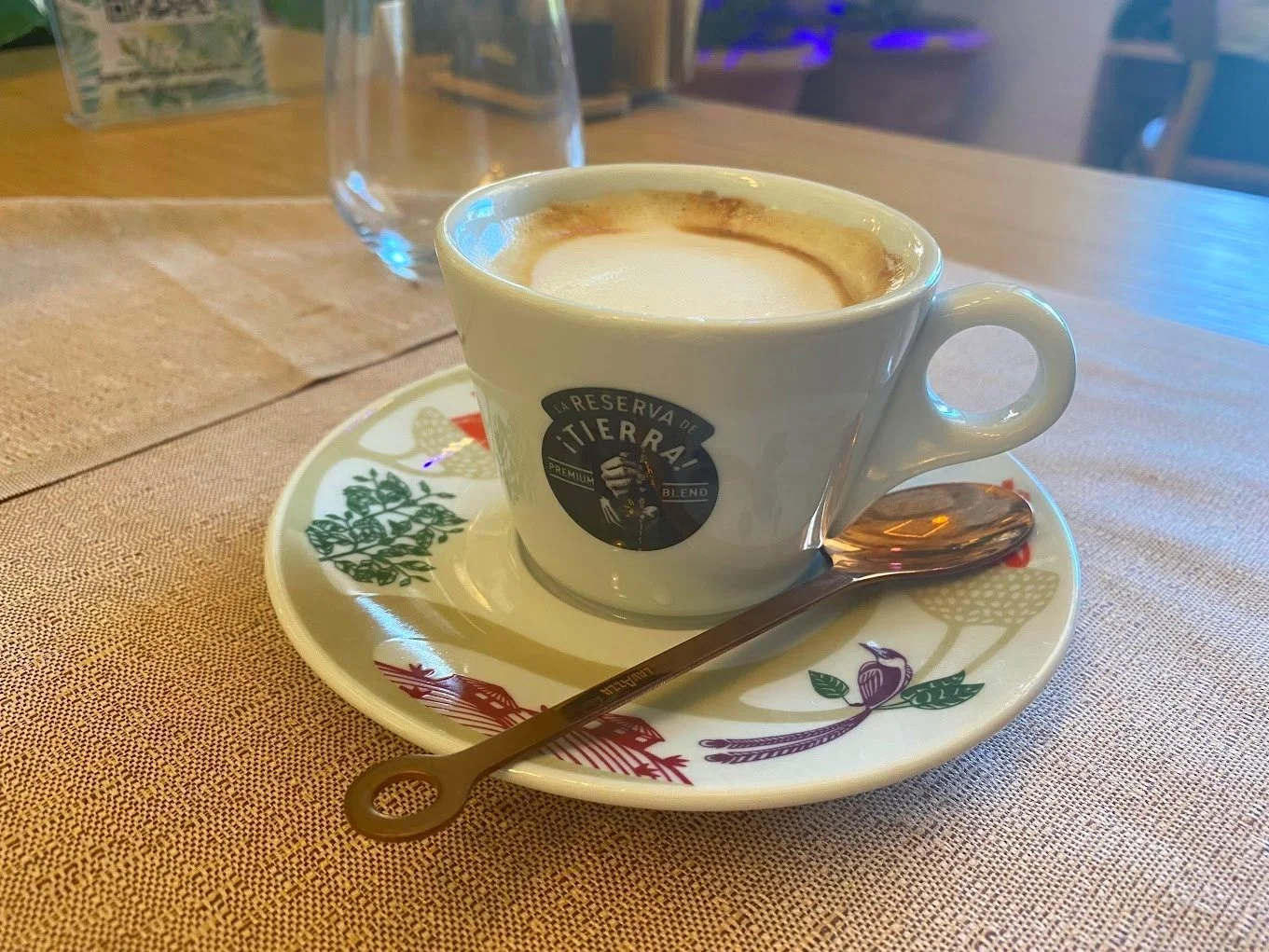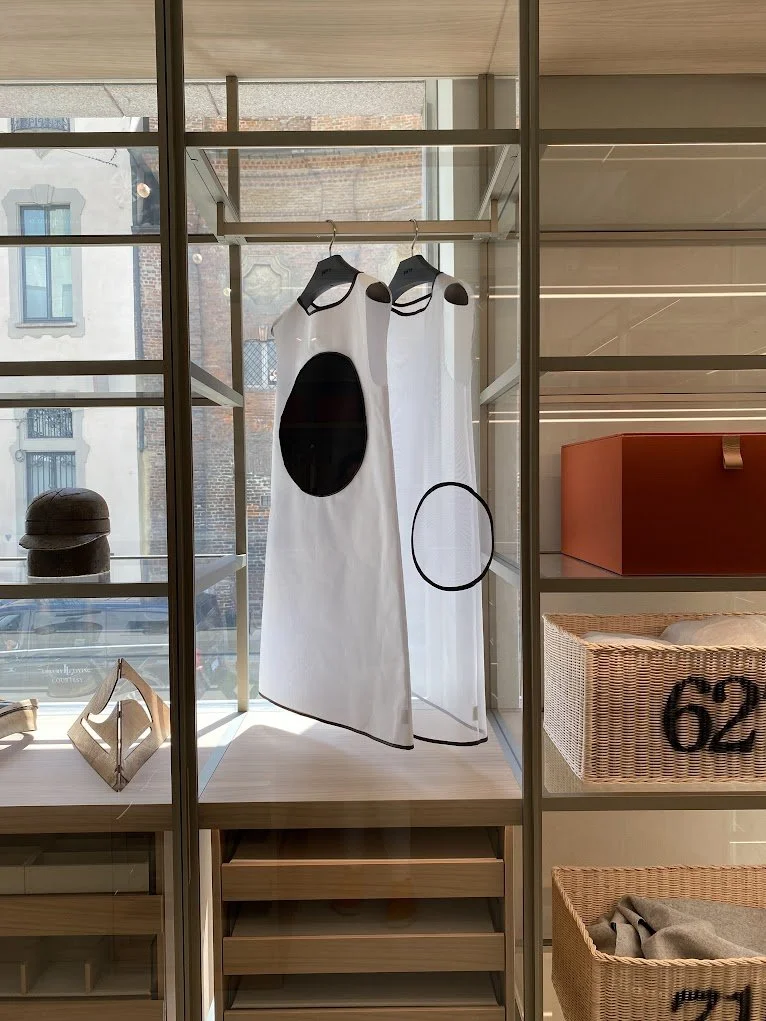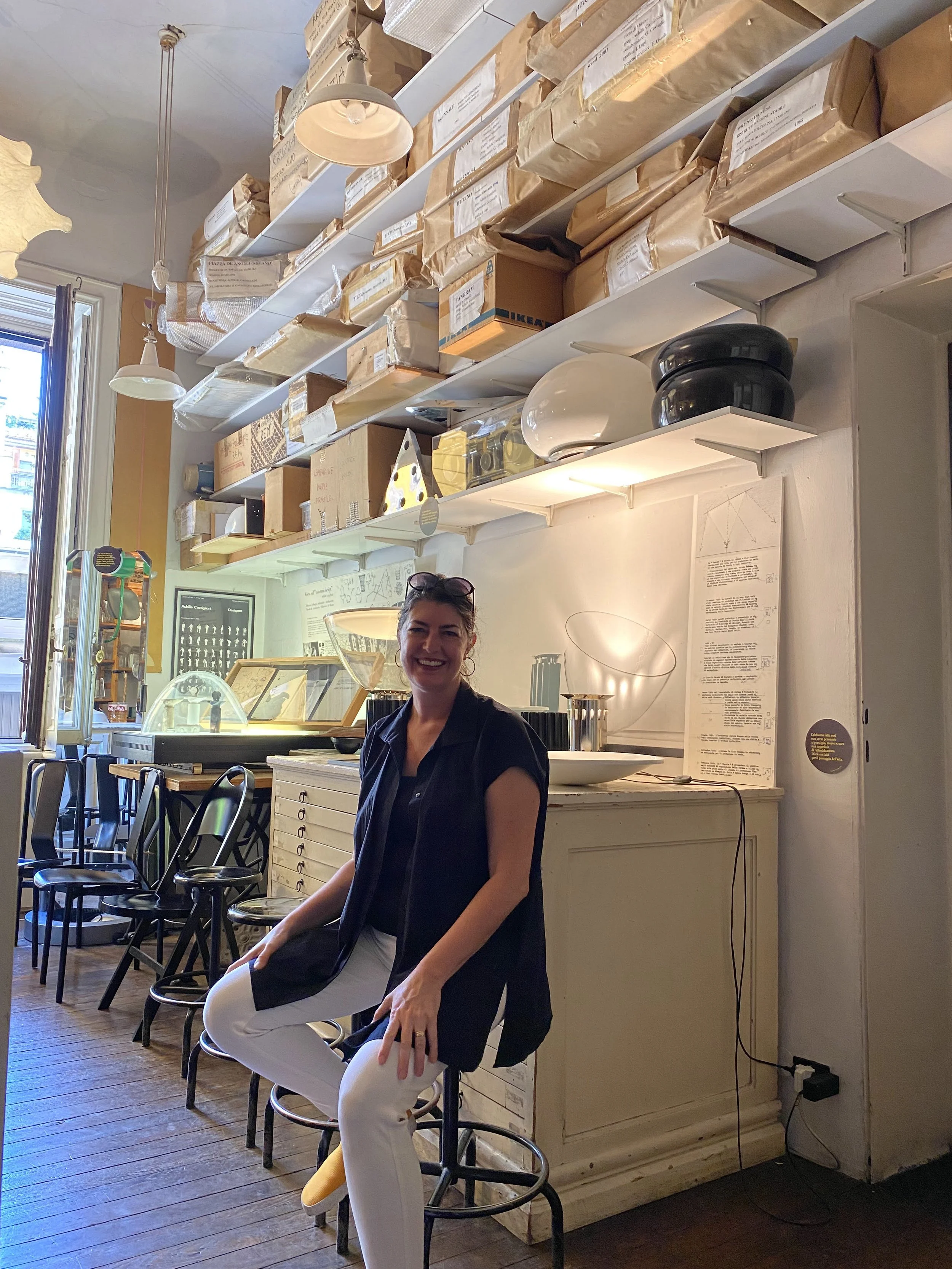Milan Design Week
Milan. It's a remarkable place for design at any time of the year, but during Salone del Mobile, it attracts over a quarter of a million visitors from around the globe who converge for this annual festival of design. This year, I was one of them.
There were days when I was moved to tears by the beauty surrounding me. A tiny spoon, carefully laid on a saucer next to a cappucino, for example. The attentiveness paid to the smallest details! To me, this level of care looks a lot like love. Usually there's an idealized version of the world in my head, and then there's the actual world I live in, and generally there's a big gap between the two. But for one magical week, that tension evaporated. The visual landscape that surrounded me was as good or better than the world of my imagination. It was a joy, a relief, a revelation. A gift, really.
So what is Design Week? It's hard to even wrap your head around. Considered to be the world's most important design event, this city-wide celebration of design encompasses a staggering number of venues. Its origins go back to 1961 when a group of Italian furniture manufacturers decided to host a trade show, called then as now the Salone del Mobile. The Salone still anchors Design Week and attracts over 2,000 exhibitors to the conference center on the edge of town, but the fuorisalone, literally “out of Salone,” takes place everywhere else.
During Design Week, design is everywhere.
The subway posters are all about design. The announcers on the subway wish you a happy design week. The introduction of a single new chair can draw jostling crowds, though perhaps the sultry pole-dancing vibes had something to do with that— ooh la la, Dior/Philippe Stark. The streetcars were even paying homage to the late Virgil Abloh with Pyrex references.
Streetcar emblazoned with Pyrex logo to honor the late Virgil Abloh
The Salone— be it in the pavilion or around town— is a conference of things, not words. It's as if all of the modern-day Leonardo Da Vincis came together to let you see both their masterworks and their sketches— everything from the highly refined ideas that worked to the newest concepts fresh out of the prototyping lab.
I spent a sunny Wednesday morning outdoors in the Piazza del Cannone hearing Francesco Faccin share his experience documenting the ingenious artifacts folks have designed in Nairobi, from mousetraps crafted from the remnants of truck tires to a drum made by pairing a 5-gallon paint can with goat skin, to lanterns made from insecticide cans.
Designer Francesco Faccin kicking off a workshop for design students at a park in Milan.
Artifacts designed in Nairobi from discarded objects. Image credit: https://francescofaccin.it/p14_made-in-slums
Francesco sees objects as the starting point of understanding a people and place, and reminded the students in the audience (he's a professor at IAAD) that you need to be a deep observer of the world around you to be a good designer. His talk was part of a broader multidisciplinary workshop series on the circular economy.
Connecting with other designers is part of the joy of Design Week, and Wednesday evening was one to remember. I met up with folks from Chicago, Milan, and France to socialize on the picturesque Via Fiori Chiari in Brera, and capped off the festivities in a wine bar where we succeeded in initiating a dance party— a raucous and fun night for all!
Enjoying the streets of Brera during Design Week
On Thursday, I made my way to Alcova, described by Vogue as a venue for “experimental design, set in the abandoned buildings of Centro Ospedaliero Militare di Baggio, a former military compound now overrun with plant life.” This fuorisalone location was also called “a must see” and described as “very Milan 90s!” by Design Week veteran Felicia Ferrone, one of the late night designer-dancers pictured above.
One of my favorite exhibits at Alcova featured a remarkable group of young fashion designers from the Czech Republic who put their talents to use serving people with non-conforming bodies. The powerful imagery of the young man they designed for, Marek, backed by a row of designers felt so totally appropriate. It embodies how I think of the role of the design team– coming together to elegantly meet the needs of one real person and putting that “user” front and center.
The exhibit featured a large-scale image of Marek supported by a team of fashion designers. Original photo by Viktorie Macánnová.
I was also moved by the designs for Marie, a woman with a skin condition, where garments were sewn with all the seams on the outside so there would be less to irritate her sensitive skin. What a beautiful inversion. This exhibit/project was collectively referred to as “Unique Client” and the designers were all students at UMPRUM in Prague; you can see more of their work here .
Also at Alcova, I came across what I would consider to be ombré anodizing– a very cool technique being pioneered by Studio LoopLoop out of the Netherlands. Their “magic colour machine” for anodizing aluminum (reminiscent of dipping Easter eggs to color them) attracted quite a crowd, and Odin Visser, one of the founders, was very happy to show it off.
Fun pops of color were also found in the café area at Alcova, with handsome tables of composed of strips of natural stone from the folks at SolidNature.
The snack area at Alcova featured tabletops composed of nature stone from SolidNature.com.
By Friday, I needed a reprieve from the heat of wandering around the city and took refuge in the Triennale Design Museum. I left feeling I could work here as a security guard and be happy the rest of my days.
Exhibit featuring Italian design at the entrance to the Triennale Museum
No detail is left unconsidered at the Triennale— my afternoon caffe latte was its own work of art.
Even the toilets at the Triennale were impressive, from the public restrooms at the museum itself to an exhibit featuring The Tokyo Toilets, a fully realized project where a range of Japanese designers and architects were invited to redesign public toilets in Tokyo leading up to the Paralympics in August of 2021.
Public restroom at the Triennale Design Museum in Milan
The Tokyo Toilet project was initiated by Koji Yanai, son of Uniqlo's founder as well as vice-president of the fashion company. In speaking about his hopes for the project, he said: “I believe that installing the best creativity and innovation in the city's infrastructure will raise the level of life itself and make everyone happy, as well as improve the quality of the city itself.”
Each designer came up with their own take on what would make public toilets better for people, resulting in 17 different designs installed around Tokyo, along with one in Milan at the Duomo. One concept features exterior glass which turns opaque when locked to address concerns about whether someone is in the toilet before entering. Another design turned the restrooms into lanterns for the nearby park, and yet another envisioned a “village” of toilets as an extension of the nearby forest. And even the cleaning crew was kept in mind and celebrated as part of the project, since cleanliness is always a key concern in public restroom use.
Yoyogi Fukamachi Mini Park Toilet designed by Shigeru Ban. Image captured from brochure about the exhibit.
Nabeshima Shoto Park Toilet designed by Kengo Kuma. Image captured from brochure about the exhibit.
By Friday evening, I was ready to relax on the terrace of my hotel, enjoying the Italian tradition of the aperitivo– sipping an Aperol spritz and feasting on nibbles designed to stimulate the appetite for dinner.
Relaxing with the Milan tradition of an aperitivo on the hotel terrace
Refreshed and raring to make the most of my remaining time in Milan, my first stop on Saturday morning was a visit to the legendary Rossana Orlandi Gallery. There were lots of delights to take in, but what blew me away was the immersive installation by the Paris design firm Studio Sé called SÉ CHIC, a play on the French phrase c’est chic.
Intended to evoke afterparty vibes in the era of 1970 disco, the level of intentionality and follow-through for every detail was impressive, from the smoky scent of the space (thanks to a carefully chosen candle) to a projected circular video of people dancing from many eras, to a tabletop strewn with gorgeous glassware, each partially filled with colorful “drinks” just as it would be at the end of a festive late night.
The Brera Design district is packed with high-end furniture galleries and showrooms, every one a wonder to behold yet none more so than Porro. The care given to every last detail feels a lot like love to me, and perhaps this is what makes Italian design, not to mention Italy itself, so alluring. The various closet designs each contained custom clothing which further elevated the aesthetic of the showroom. I learned later that Maria Porro, who studied set design, is now the marketing and communications chief of the family company, not to mention the first female president of the Salone del Mobile. It shows, and to great effect.
The closet designs at the Porro Duriniquindici showroom in Milan each featured a different set of custom clothing.
For my last afternoon in Milan, I lucked out and got a studio tour of the late Italian designer Achille Castiglioni.
This is hallowed ground for design fans, and a popular destination during Design Week, when a crew of designers and architects speaking at least five different languages had queued up for the 2 p.m. tour. We were welcomed and greeted by Achille's daughter Giovanna, who led the tour of her father's prototyping lab and studio. The playful energy of his designs was very much apparent through Giovanna's skillful storytelling and the many wonderful artifacts themselves. Castiglioni created hundreds of designs from exhibits to to furnishings and lighting— many of which are still in production today. He also taught some of today's most respected designers, including Patricia Urquiola and Konstantin Grcic.
Giovanna Castiglioni gives a playful tour of her father's design studio and has the Ventosa lamp (designed by her father Achille and uncle Pier Giacomo) affixed to her forehead with its suction cup.
Designer Pam Daniels in Achille Castiglioni's studio and prototyping lab
I'm now back home in Chicago, reflecting on the words of Mies van der Rohe, that God is in the details. If that's the case, God is all over Milan, especially during Design Week. I'm grateful to have had the opportunity to experience my first Salone, and hope that if you have the chance, you'll check it out for yourself.
Provaci! Fallo— Go for it!
